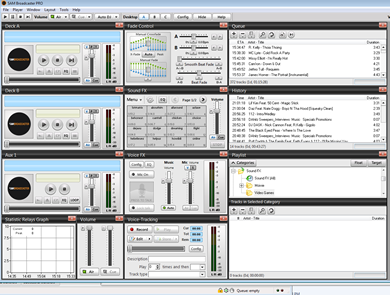

- #Shoutcast server download ubuntu install
- #Shoutcast server download ubuntu update
- #Shoutcast server download ubuntu plus
You could wait until you run the opam init command and see what it tells you, or install these now, which are ones I’ve had to install on fresh systems. If using the script to install, you’ll probably need to install some dependencies. I like installing the latest version with the official install script, but you can just install an older version via apt install opam. When using OPAM to install Liquidsoap, it will only run for the user who installed it. Liquidsoap recommends the OPAM installation method, but there are other options.īe sure to login as the radio user for the Liquidsoap install.

You can return to the screen by typing screen -r Install Liquidsoap Start the ncftp command, and then leave the screen instance with control + a then d (for detach). Simply enter screen and you’ll get a new prompt. Screen will allow it to continue in the background. This will probably take a long time, and you don’t want to ncftp process to stop if your connection drops, so it is best to use screen for this.

~/music/ is where you’re moving the music TO on your VPS.) media is the normal folder for CentovaCast setups. (Replace /media with the path to your music folder on the old host. Ncftpget -RTvu 'username' ~/music/ /media (If you have SSH access to the old server, it’s much faster to use rsync, it will be something like rsync -azv ~/music) sudo apt install ncftp If you happen to be moving from an existing radio host, and all your music is already on their server, you can transfer directly using ncftp.

Get some Music mkdir ~/musicīegin uploading music with an SFTP client, such as ForkLift or Cyberduck. The daemon option will keep sc_serv running in the background. We’re logged in with the radio user, so use sudo: sudo ~/sc/sc_serv daemon ~/sc/nf Because 80 is special, I have to start Shoutcast as root. I am using port 80 because of some listeners behind firewalls. Here is my config file: logfile=logs/sc_serv.log Or just copy the basic config example and start editing it.
#Shoutcast server download ubuntu plus
Then point your browser to the IP of you VPS plus the port, e.g. Install ShoutcastĪdditional info can be found at /wiki/SHOUTcast_Broadcaster.
#Shoutcast server download ubuntu update
apt update & apt -y upgradeĬreate a user, such as “radio” and add to the sudo group for root privileges: adduser radioĮxit and log back in as your new user (or switch to the new user: su - radio). Once you have the IP for your VPS, you can create an A record in your domain’s DNS to point to the VPS. I’m using a 4-core VPS at Scaleway (DEV-L), so each station is using 1 core for its Liquidsoap instance, and the CPU load on each core is around 50%.) System PrepĬhoose a VPS provider and spin up a new VPS running Debian (or Ubuntu). (There may be some ways around this limitation, but I am currently doing fine running 3 different stations, each at 2 different bit rates. Also, if you plan to broadcast the same stream using multiple bitrates or codecs, you’ll need a decent CPU because Liquidsoap only uses one CPU core per instance. You’ll most likely need a VPS with unlimited bandwidth. It is definitely possible, but I won’t cover it here. There’s no GUI and my stations only shuffle music, I don’t do live sets. This is a guide for setting up basic radio stations (with SSL and port 80) using Shoutcast and Liquidsoap.


 0 kommentar(er)
0 kommentar(er)
